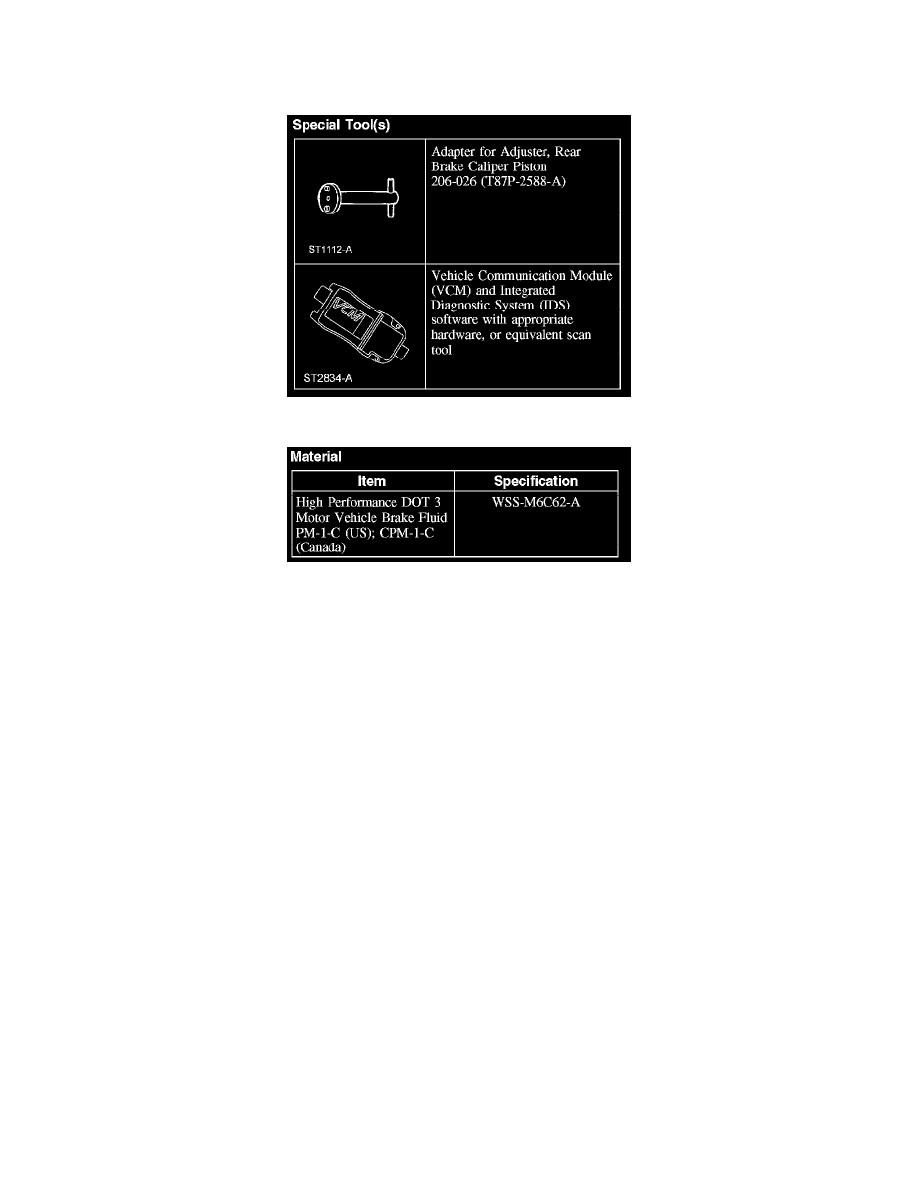Milan FWD L4-2.3L (2008)

Brake Bleeding: Service and Repair
Component Bleeding
Component Bleeding
Special Tool(s)
Material
Master Cylinder
WARNING: Do not use any fluid other than clean brake fluid meeting manufacturer's specification. Additionally, do not use brake fluid that
has been previously drained. Following these instructions will help prevent system contamination, brake component damage and the risk of
serious personal injury.
WARNING: Carefully read cautionary information on product label. For EMERGENCY MEDICAL INFORMATION seek medical advice.
In the USA or Canada on Ford/Motorcraft products call: 1-800-959-3673. For additional information, consult the product Material Safety
Data Sheet (MSDS) if available. Failure to follow these instructions may result in serious personal injury.
WARNING: Do not allow the brake master cylinder to run dry during the bleeding operation. Master cylinder may be damaged if operated
without fluid, resulting in degraded braking performance. Failure to follow this instruction may result in serious personal injury.
CAUTION: Brake fluid is harmful to painted and plastic surfaces. If brake fluid is spilled onto a painted or plastic surface, immediately wash
it with water.
NOTE: When any part of the hydraulic system is disconnected for repair or installation of new components, air can enter the system and cause spongy
brake pedal action. This requires bleeding of the hydraulic system after it is correctly connected. The hydraulic system can be bled manually or with
pressure bleeding equipment.
NOTE: When a new brake master cylinder is installed, or the system is emptied or partially emptied, it should be primed to prevent air from entering
the system.
1. Disconnect the brake tubes.
